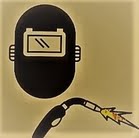Fire extinguishers are essential safety devices designed to combat different types of fires. Since not all fires are the same, extinguishers are classified based on the type of fuel burning. Each extinguisher contains a unique extinguishing agent optimized for a specific class of fire, ensuring maximum effectiveness and safety.
Below is a detailed explanation of the different types of fire extinguishers:
1. Combustible Metal (Class D) Fire Extinguisher
- Use: Exclusively for Class D fires (combustible metals like magnesium, titanium, sodium, potassium, and aluminum).
- Agent: 30 lb. pressurized dry powder designed for specific metals. Bulk containers are also available for scooping powder onto fires.
- Range: 6–8 ft maximum effective range.
- Activation: Requires opening a nitrogen cylinder at the back to pressurize the extinguisher body.
- Mechanism: Extinguishes by smothering, cutting off oxygen supply to burning metals.
- Special Note: Should not be used on ordinary combustible fires, as they are specifically tailored to metal reactions.
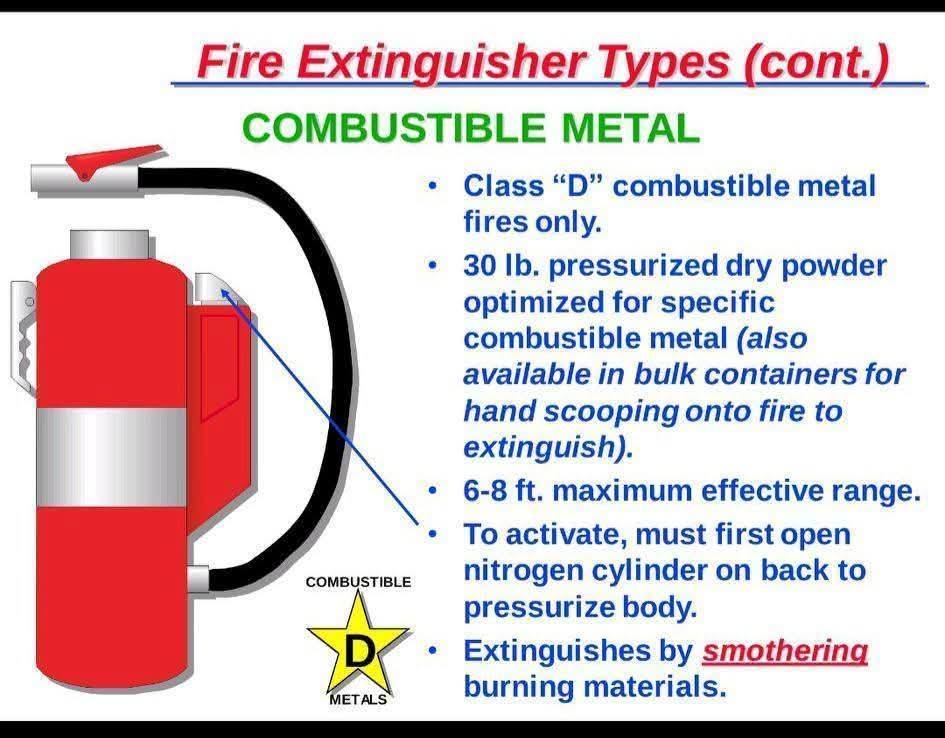
2. Halon Fire Extinguisher
- Use: Effective on Class A (ordinary combustibles), Class B (flammable liquids), and Class C (electrical) fires. Smaller units may not be effective against Class A.
- Agent: Halon 1211 (a pressurized liquid) discharged as vapor. Discharge lasts 8–18 seconds.
- Range: 9–16 ft. maximum effective range.
- Features: Equipped with a pressure gauge for easy capacity check.
- Mechanism: Works by smothering flames without leaving residue, making it ideal for sensitive electronics.
- Limitations: Halon fumes are toxic if inhaled, and due to its ozone-depleting nature, production was halted in January 1994.
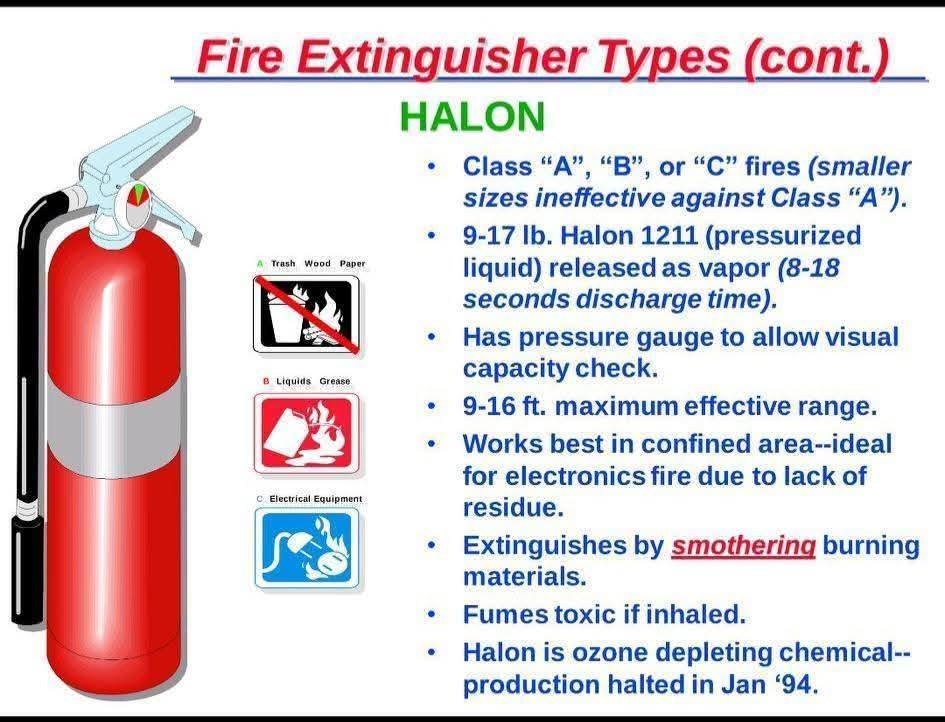
3. Pressurized Water Fire Extinguisher
- Use: Designed only for Class A fires (wood, paper, cloth, and trash).
- Agent: 2.5 gallons of water at 150–175 psi with a discharge time of up to 1 minute.
- Range: 30–40 ft. maximum effective range.
- Features: Includes a pressure gauge and allows starting and stopping as needed.
- Mechanism: Extinguishes by cooling, lowering the burning material’s temperature below its ignition point.
- Warning: Should never be used on electrical (Class C) or flammable liquid (Class B) fires.
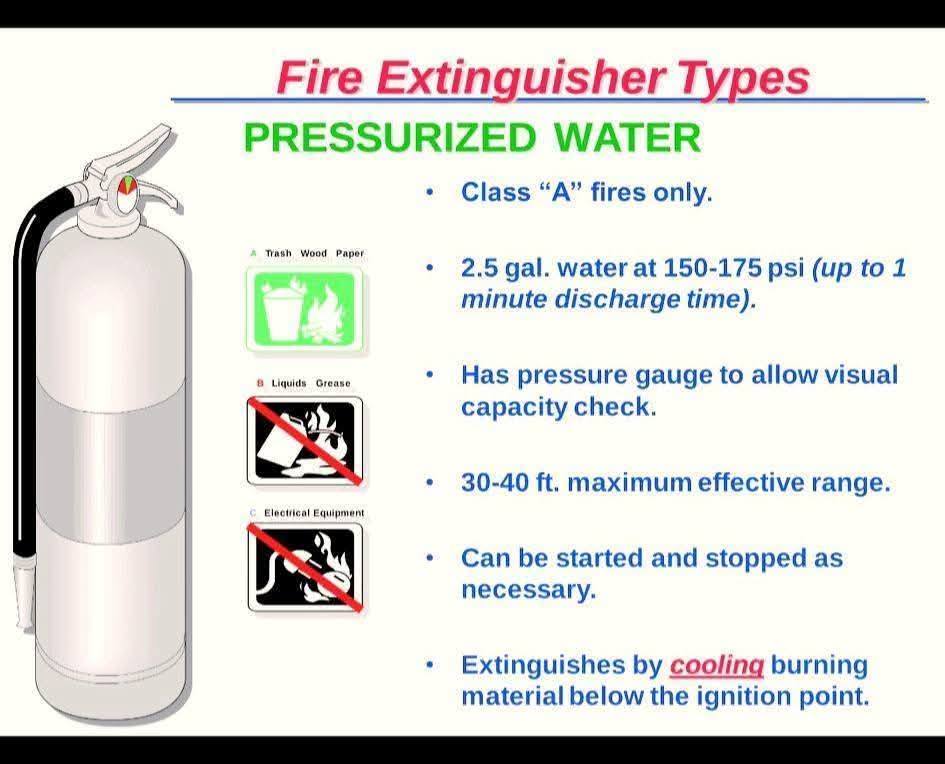
4. Multipurpose Dry Chemical Fire Extinguisher
- Use: Effective against Class A, B, and C fires.
- Agent: Ammonium phosphate dry chemical pressurized by nitrogen gas at 50–200 psi. Discharge lasts 8–25 seconds.
- Range: 5–20 ft. maximum effective range.
- Features: Comes with a pressure gauge for easy inspection.
- Mechanism: Extinguishes by smothering, cutting off oxygen and interrupting the chemical chain reaction of flames.
- Advantage: One of the most common and versatile extinguishers used in homes, offices, and industries.

5. Carbon Dioxide (CO₂) Fire Extinguisher
- Use: Best for Class B (flammable liquids) and Class C (electrical fires).
- Agent: CO₂ gas stored at 150–200 psi, with a discharge time of 8–30 seconds.
- Range: 3–8 ft. maximum effective range.
- Features: Does not have a pressure gauge; the capacity is checked by weight.
- Mechanism: Extinguishes by smothering flames and displacing oxygen.
- Limitation: Effectiveness decreases as the fire temperature increases.
- Special Note: Leaves no residue, making it suitable for electronic equipment but less effective outdoors due to quick dissipation.
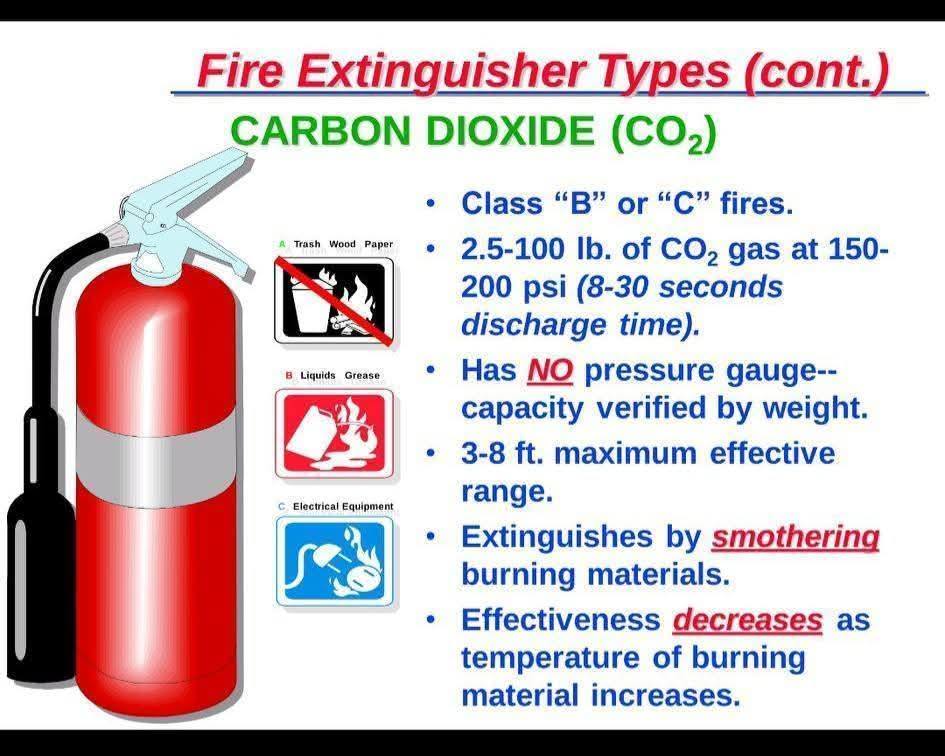
6. Wet Chemical Fire Extinguisher
- Use: Suitable for Class A, C, and especially Class K fires (cooking oils and fats).
- Agent: 1.5 gallons of PRX wet chemical stored under pressure with a 40-second discharge time.
- Range: 10–12 ft. maximum effective range.
- Special Instructions: For Class K fires, use only after the fixed fire suppression system is activated.
- Mechanism: Extinguishes by cooling and creating a foam blanket to prevent re-ignition.
- Applications: Commonly used in commercial kitchens where cooking oil fires are most frequent.
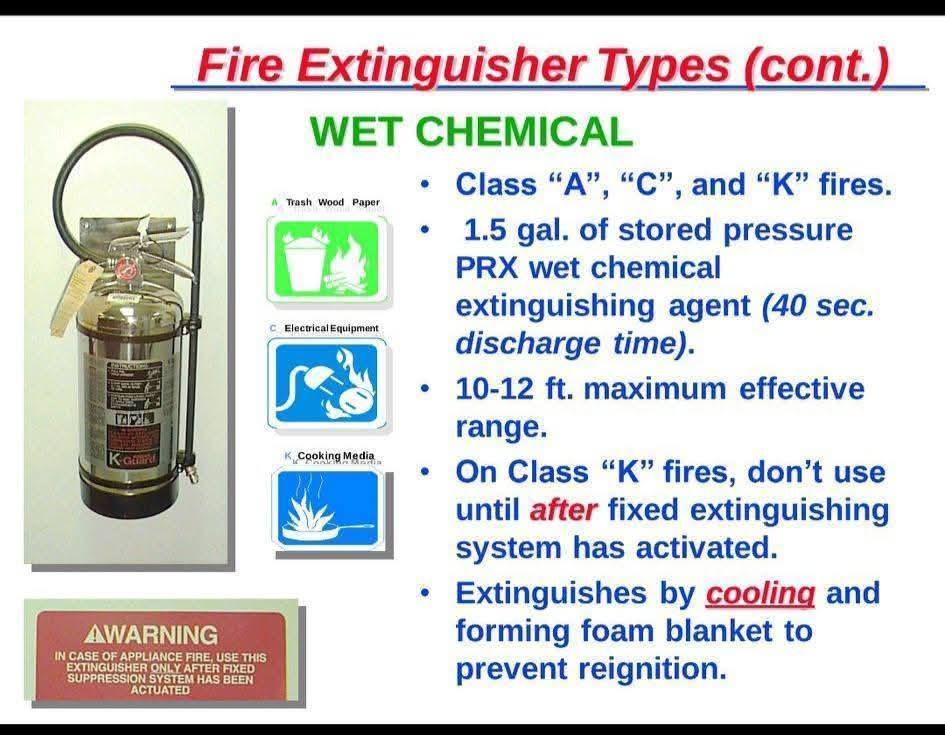
Conclusion
Fire extinguishers are not one-size-fits-all. Each type is engineered to target specific fire hazards:
- Water for Class A fires (ordinary combustibles).
- CO₂ for Class B and C (liquids and electrical).
- Dry Chemical for multipurpose A, B, and C.
- Halon for sensitive electronics (though phased out).
- Wet Chemical for cooking oil fires (Class K).
- Metal extinguishers for Class D combustible metals.
Understanding these differences ensures safety during emergencies and helps prevent the spread of fires. Proper training, placement, and maintenance of fire extinguishers are critical in safeguarding lives and property.
